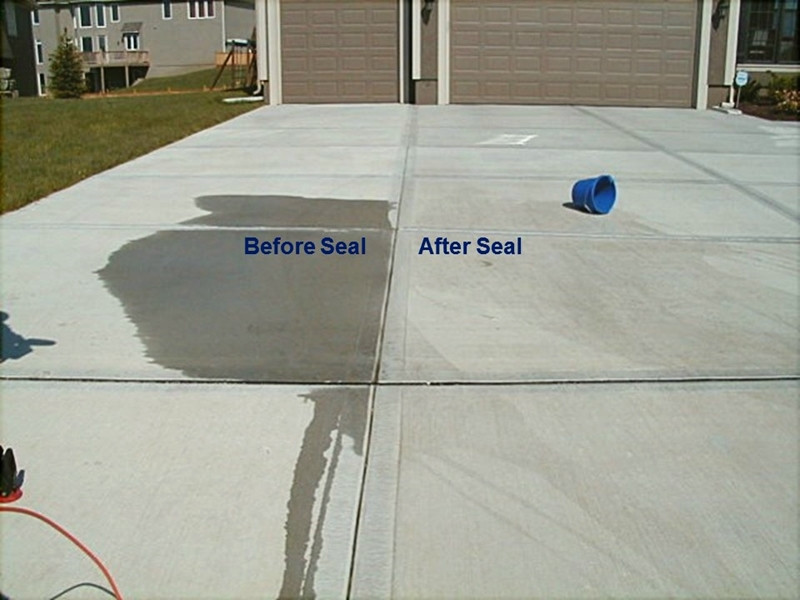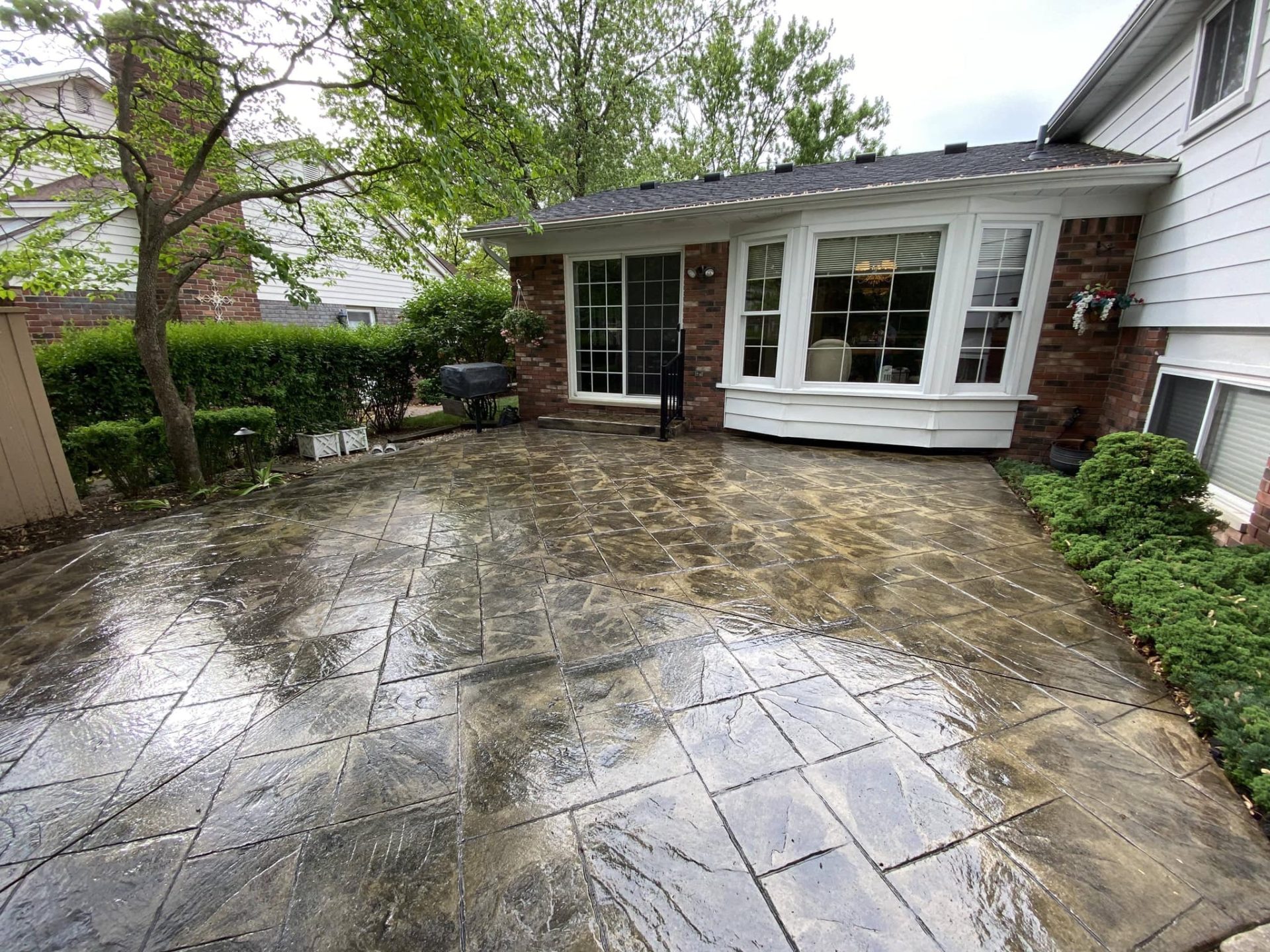Nashville's Trusted Concrete Sealing Specialists
Wiki Article
The Ultimate Overview to Concrete Sealing: Improve Toughness and Security
Concrete is a sturdy and extensively used material, but it is not unsusceptible the elements. Over time, direct exposure to moisture, UV rays, and different impurities can cause concrete to wear away, compromising its architectural stability and look. That's where concrete sealing comes in. By applying a high-grade sealant, you can substantially improve the toughness and security of your concrete surfaces. Exactly how precisely does concrete securing job? What are the steps involved? And which kind of sealer should you choose? In this best overview, we will certainly explore all these concerns and more, offering you with practical ideas and beneficial insights to aid you make notified decisions and make certain the resilient performance of your concrete.Importance of Concrete Sealing
Concrete securing is an important step in making certain the long life and protection of concrete frameworks. By using a high-grade sealant, the concrete's pores are filled, developing a safety obstacle that avoids the infiltration of unsafe materials.One of the primary advantages of concrete sealing is the prevention of moisture intrusion. Securing the concrete avoids water from entering the surface area, minimizing the threat of damage and prolonging its life-span.

Actions to Prepare Your Concrete Surface Area
To make sure ideal results when securing concrete, correct prep work of the surface area is necessary. Prior to you begin the sealing procedure, it is crucial to completely clean the concrete surface area.After cleaning up the surface, it is critical to repair any damages or cracks. Complete the splits with a concrete split filler to avoid water penetration and more damage. For bigger potholes or fractures, use a patching substance to restore the integrity of the concrete.
When the surface area is tidy and repaired, it is suggested to etch the concrete. Etching develops a rougher appearance, allowing the sealant to pass through far better and adhere effectively. You can use an etching solution or a mechanical etching tool to achieve the desired texture.
After engraving, it is vital to thoroughly rinse the surface area and enable it to completely dry entirely. Moisture can affect the sealer's performance and adhesion, so ensuring the concrete is dry is essential.
Different Kinds of Concrete Sealers
There are various kinds of sealers readily available for improving the longevity and protection of concrete surfaces. These sealants can be generally identified into two classifications: penetrating sealers and topical sealers.Permeating sealants, also called impregnating sealers, job by passing through the concrete surface area and chemically responding with the minerals to form a safety obstacle. They do not modify the appearance of the concrete and supply long-lasting security against dampness, discolorations, and freeze-thaw damage. Examples of permeating sealants include silane, siloxane, and lithium-based sealers.
On the various other hand, topical sealers form a protective layer on the surface area of the concrete. They come in numerous finishes, such as matte, satin, or high gloss, and can improve the look of the concrete by including deepness and sparkle.
It is very important to pick the best sealer based upon the details demands and demands of the concrete surface area. Aspects such as the degree of exposure, wanted appearance, and upkeep factors to consider must be taken into consideration. Consulting with an expert or doing extensive research study can assist in choosing the most suitable sealer for a particular task.
How to Apply Concrete Sealant
When it involves properly prolonging the life-span and protecting of your concrete surface areas, using the concrete sealant calls for cautious focus and a systematic approach. The procedure of applying a concrete sealer entails several actions that must be followed to make sure optimal results.First of all, it is necessary to prepare the concrete surface area prior to using the sealer. This consists of cleaning up the surface thoroughly, eliminating any kind of dirt, debris, or stains. It is suggested to utilize a pressure washing machine or a scrub brush to accomplish a clean and smooth surface area.
Next, it is essential to allow the concrete surface area to dry totally prior to applying the sealant. Moisture can conflict with the sealer's performance and may bring about poor attachment. It is suggested to wait a minimum of 1 day after cleaning up prior to continuing with the application.
As soon as the surface is completely dry, it is time to use the concrete sealant. It is important to adhere to the producer's instructions pertaining to the application method, whether it be utilizing a roller, sprayer, or brush . It is very important to use the sealer uniformly and stay clear of over-application, as this can lead to an irregular finish.
After applying the sealant, it is necessary to enable it to completely dry and cure according to the producer's guidelines. This usually entails waiting for a certain duration, usually 24 to two days, prior to subjecting the surface to foot web traffic or various other activities.
Maintenance Tips for Sealed Concrete Surfaces
Proper maintenance is crucial for preserving the longevity and appearance of sealed concrete surface areas. While concrete sealers provide a safety obstacle against spots, moisture, and various other damage, they are not invincible. Normal maintenance is essential to guarantee the sealer remains to perform properly and expand the lifespan of the concrete.One crucial upkeep tip is to clean up the sealed concrete surface regularly (Concrete Sealing nashville). This can be done by sweeping away dust and debris with a mop or utilizing a light detergent and water solution for even more persistent discolorations. Avoid making use of unpleasant cleansers or tools that might harm the sealant
One more important aspect of maintenance is Concrete Sealing nashville evaluating the secured concrete surface for any signs of wear or damages. Try to find areas where the sealant may have worn away or where water has passed through the surface. If any kind of problems are found, it is essential to address them promptly by reapplying the sealant or seeking advice from an expert for repair work.

Conclusion
In conclusion, concrete sealing is critical for improving the sturdiness and defense of concrete surfaces. Overall, concrete sealing is a valuable financial investment that can considerably lengthen the lifespan of concrete frameworks.Concrete sealing is a crucial action in ensuring the durability and protection of concrete frameworks.Furthermore, concrete securing helps to improve the structural honesty of the concrete.Permeating sealants, likewise recognized as impregnating sealants, work by permeating the concrete surface area and chemically reacting with the minerals to create a protective barrier.In verdict, concrete sealing is essential for boosting the toughness and security of concrete surface areas. In general, concrete securing is an useful investment that can substantially lengthen the life expectancy of concrete structures.
Report this wiki page